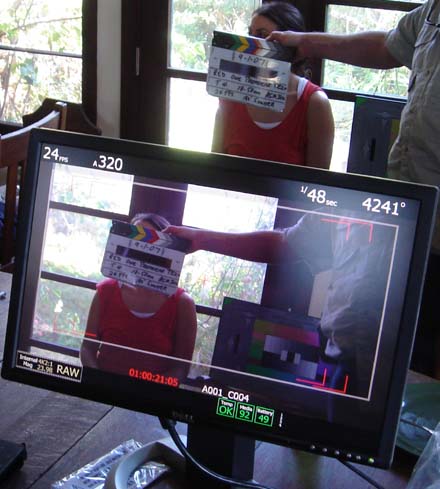Brian Dobbs
Ambassador
Two things to consider here...
My point...
I'd like to make the case for why filmmakers should only frame for 2.40 if they are capturing on film with wide angle lenses. Otherwise, they should just release movies in 1.85:1, or 1.78:1 for that matter.
Why?
How often do we see behind-the-scenes footage of the making of a film where the director is watching 16:9 preview monitors with crop lines to show where they will eventually crop the image?

2.40:1 movies nowadays are really just masked versions of the original capture.
It sounds weird to say this, but I say we take back the term "Fullscreen" and use it to define 1.78:1 or 1.85:1 movies.
Since the inception of digital cinema, home video has been where the majority of modern films have had their longest lifespan. The theater is but a brief home for movies. Mere weeks. So why are we cropping movies for the theater instead of home video? IMAX is even installing in the home now.
I'm sick of the black bars. Anyone else? Fullscreen is so much more immersive!
1.78:1 is the home standard, and I doubt that will change.
FWIW, I'm happy to report that the upcoming Justice League 2017 movie has an aspect ratio of 1.85:1.
p.s. Seems like this topic has been brought up before.
- Back in the age of film, some directors would use wide angle lenses to capture wide vistas to a squarish film negative, to then apply anamorphic stretching to project the wide image in the theater. 2.35/2.40 films were technically "larger" (wider) than other films.
- Back in the 4:3 days, we had the option of "Fullscreen" or "Widescreen." Most of us avoided "Fullscreen" like the plague, as it offered a cropped, pan and scan version of the film.
My point...
I'd like to make the case for why filmmakers should only frame for 2.40 if they are capturing on film with wide angle lenses. Otherwise, they should just release movies in 1.85:1, or 1.78:1 for that matter.
Why?
How often do we see behind-the-scenes footage of the making of a film where the director is watching 16:9 preview monitors with crop lines to show where they will eventually crop the image?

2.40:1 movies nowadays are really just masked versions of the original capture.
It sounds weird to say this, but I say we take back the term "Fullscreen" and use it to define 1.78:1 or 1.85:1 movies.
Since the inception of digital cinema, home video has been where the majority of modern films have had their longest lifespan. The theater is but a brief home for movies. Mere weeks. So why are we cropping movies for the theater instead of home video? IMAX is even installing in the home now.
I'm sick of the black bars. Anyone else? Fullscreen is so much more immersive!
1.78:1 is the home standard, and I doubt that will change.
FWIW, I'm happy to report that the upcoming Justice League 2017 movie has an aspect ratio of 1.85:1.
p.s. Seems like this topic has been brought up before.




